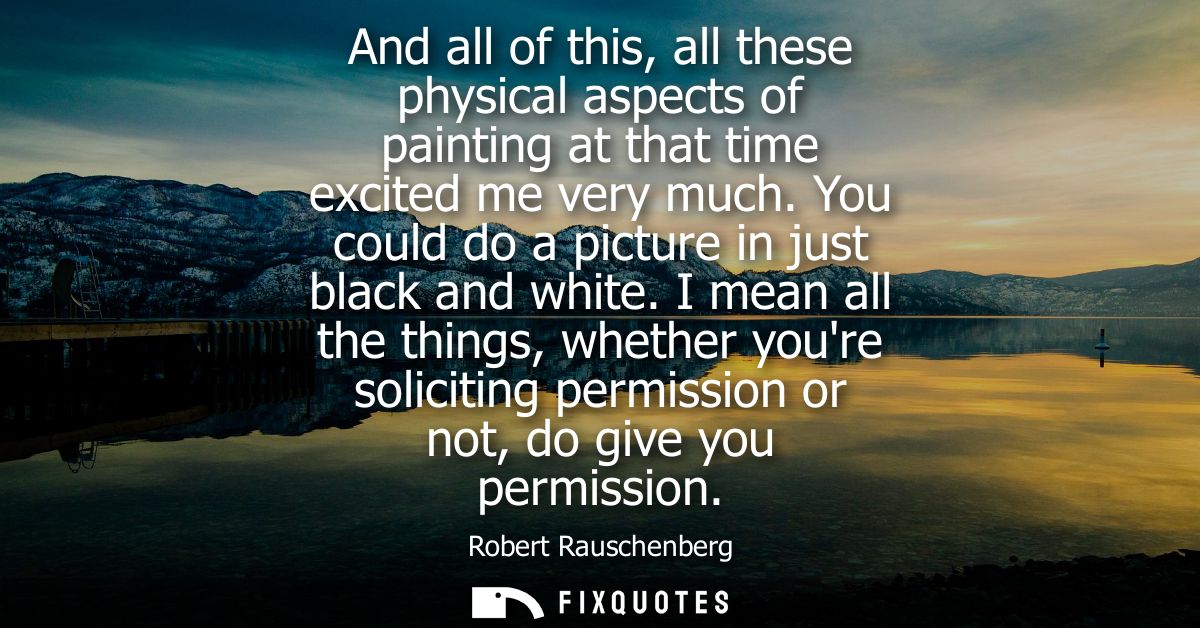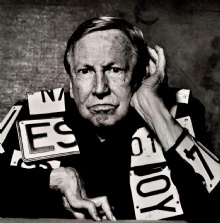"And all of this, all these physical aspects of painting at that time excited me very much. You could do a picture in just black and white. I mean all the things, whether you're soliciting permission or not, do give you permission"
About this Quote
Robert Rauschenberg expresses his fascination with the material and physical aspects of painting during a transformative artistic period. He emphasizes the liberating experience of exploring different mediums, suggesting that even working within the strict limitations of black and white can spark creative excitement. For Rauschenberg, the choice to work in monochrome arrays was not merely a constraint but an opportunity, a challenge that encouraged him to think beyond traditional expectations and expand his creative vocabulary. Rather than viewing restrictions as a hindrance, he identifies them as permissions, an open door to experimentation without needing explicit approval from artistic authorities or movements.
The phrase "whether you're soliciting permission or not, do give you permission" highlights a central tenet of Rauschenberg’s artistic philosophy. He recognizes that art’s inherent flexibility and openness empower the artist to move freely, making choices independent of external validation. For him, the act of painting itself validates unconventional approaches, encouraging bold choices such as stark black and white canvases. This autonomy is exciting because it allows the artist to break norms and investigate new ground, fueling a sense of discovery and possibility.
Rauschenberg’s reflection also nods towards a broader movement in twentieth-century art, especially among artists who sought to challenge or redefine the boundaries of painting. By focusing on the tangible qualities of materials, texture, color, presence, he affirms the tangible joy and energy to be found in the act of making. Ultimately, these "permissions" are not granted by institutions but are realized through the artist’s willingness to explore, risk, and trust intuition. The excitement comes from the realization that creation need not answer to tradition; freedom exists in the tactile, material process, allowing for constant reinvention and imaginative play.
More details
About the Author

